Ermines, also known as stoats or short-tailed weasels, are fascinating creatures that can make unique pets. With their playful nature and striking appearance, they have become increasingly popular among exotic pet enthusiasts. If you're considering adding an ermine to your family, here’s everything you need to know about their care, behavior, and habitat needs.
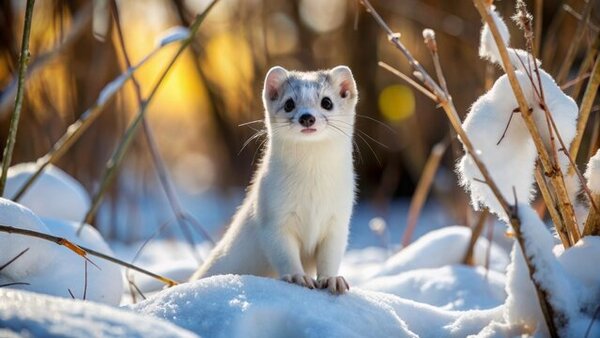
Ermines are small, carnivorous mammals belonging to the mustelid family, which includes ferrets, otters, and badgers. They are known for their beautiful, luxurious fur that changes color with the seasons—brown in summer and white in winter, with a distinctive black tip on the tail. These agile animals are native to North America, Europe, and Asia.
Here’s a detailed overview of different types of weasels, including their suitability as pets, aggression levels, and other relevant characteristics presented in a table format.
| Species | Scientific Name | Suitability as Pets | Aggression Level | Notes |
|---|---|---|---|---|
| European Ermine | Mustela erminea | Yes, with proper care | Low to Moderate | Small, requires socialization and handling. |
| American Mink | Neovison vison | Not recommended | Moderate to High | Can be aggressive; requires a large space. |
| Stoat | Mustela erminea | Yes, with experience | Moderate | Similar to ermine; needs social interaction. |
| Black-footed Ferret | Mustela nigripes | Yes, but rare | Moderate | Highly endangered; needs specialized care. |
| Long-tailed Weasel | Mustela frenata | Not commonly kept | Moderate | Requires lots of space and stimulation. |
| Ferret | Mustela putorius furo | Yes, very popular | Low | Domesticated, friendly, and social. |
| Tayra | Eira barbara | Not common | Moderate to High | Needs a large environment; more independent. |
| Wolverine | Gulo gulo | Not suitable | High | Wild animal; requires extensive space and care. |
European Ermine: These small weasels are often kept as pets. They are playful but require regular handling to become accustomed to humans.
American Mink: While they are beautiful animals, minks can be aggressive and are best suited for wildlife rather than domestic environments.
Stoat: Similar in behavior to the ermine, stoats can be kept as pets but require socialization to reduce potential aggression.
Black-footed Ferret: These are endangered species and not commonly kept as pets. They are highly social and need a lot of interaction.
Long-tailed Weasel: Rarely kept as pets due to their high activity level and need for space.
Ferret: The most popular weasel as a pet. They are friendly, social, and relatively easy to care for, making them great companions.
Tayra: These animals are more independent and not typically kept as pets due to their needs for space and stimulation.
Wolverine: Wolverines are wild animals and are not suitable as pets due to their size, strength, and aggressive nature.
While some weasels, like the ferret and European ermine, can make good pets with the right care and socialization, others are not suited for domestication due to their aggression levels and specific habitat needs. Always consider the animal's natural behavior and requirements before deciding to keep one as a pet.
Ermines are known for their playful and curious nature. They are highly energetic and love to explore their surroundings. Here are some key behavioral traits to expect from your pet ermine:
Playful: Ermines enjoy interactive play and require toys to keep them entertained. They may play with small balls, tunnels, and even small stuffed animals.
Curious: These animals are natural explorers. It’s essential to create a safe environment where they can investigate without the risk of escape or injury.
Social: While ermines can bond closely with their human caregivers, they may not always get along with other pets. Early socialization is important.
Creating a suitable habitat for your ermine is crucial for their health and happiness. Here are some tips for setting up their living space:
Cage Size: Choose a spacious cage that allows for climbing and exploring. A multi-level cage is ideal. The minimum size should be 24” x 24” x 36”.
Bedding: Use soft bedding materials like paper-based bedding or aspen shavings. Avoid cedar or pine shavings, as they can be harmful to their respiratory systems.
Environmental Enrichment: Provide plenty of toys, tunnels, and climbing structures. Rotate toys regularly to keep things interesting.
Caring for an ermine, whether as a pet or in a rehabilitation setting, requires a comprehensive understanding of their dietary needs and general care. Here’s a detailed guide on how to feed and care for your ermine effectively.
Ermines are obligate carnivores, meaning their diet primarily consists of animal-based proteins. In the wild, they primarily hunt small mammals, birds, and insects. Here’s how you can replicate their natural diet in captivity:
Protein Sources: Offer a variety of high-quality protein sources, including:
Raw Meats: Small pieces of rabbit, chicken, or turkey are excellent options.
Whole Prey: If possible, whole prey items like mice or chicks can provide balanced nutrition.
Insects: Crickets, mealworms, and superworms are good for protein and can be offered as treats.
Juveniles: Young ermines require more frequent feeding due to their rapid growth. Feed them 2-3 times a day.
Adults: Adult ermines can be fed once a day or every other day, depending on their activity level and body condition.
When feeding your ermine, it’s essential to consider portion sizes:
Protein Amount: Offer an amount of meat roughly equal to the size of the ermine’s head for each feeding. Adjust based on their age, weight, and activity level.
Observation: Monitor your ermine’s body condition. If they seem overweight, reduce portion sizes; if underweight, consider increasing the amount.
While a diet based on raw meat can be sufficient, adding supplements may enhance your ermine's health:
Calcium: Consider calcium supplements if you’re not feeding whole prey, as ermines require this for healthy bone development.
Vitamins: A multivitamin specifically designed for carnivores can help ensure they receive all necessary nutrients.
Always provide fresh, clean water. While ermines get some moisture from their food, it’s essential to ensure they have access to water at all times.
Change the water daily to keep it clean and appealing.
Regularly check your ermine for signs of health issues, including changes in appetite, weight fluctuations, or lethargy. These could indicate dietary imbalances or health problems.
Establish a consistent feeding schedule to help your ermine anticipate mealtime. This can help reduce stress and improve their eating habits.
Always handle raw meat with care to prevent contamination. Wash your hands thoroughly after preparing their food and clean any utensils or surfaces used in the process.
Store raw meat in the refrigerator or freezer to keep it fresh and safe for consumption
Feeding and caring for an ermine requires attention to their specific dietary needs and overall health. By providing a balanced diet rich in proteins, ensuring regular feeding schedules, and monitoring their health, you can help your ermine thrive. Remember that each animal is unique, so be attentive to their individual needs and adjust their care accordingly. With proper care, your ermine can be a healthy and happy companion.
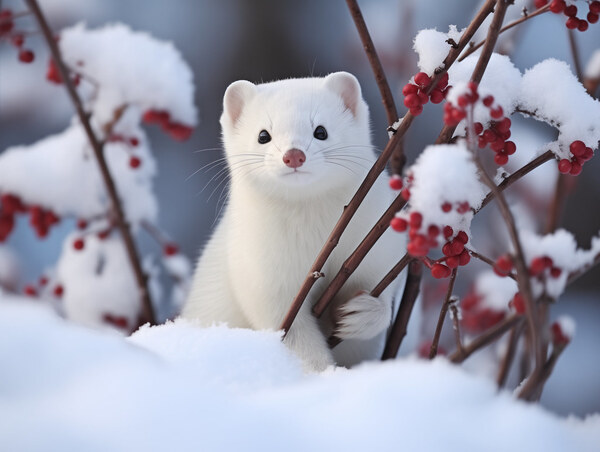
Regular veterinary care is essential for your ermine’s health. Here are some important aspects to consider:
Regular Check-ups: Schedule annual vet visits to monitor your pet’s health. Be sure to find a veterinarian experienced with exotic pets.
Vaccinations: Discuss vaccination needs with your veterinarian, as some vaccines may be recommended based on your ermine’s lifestyle.
Signs of Illness: Keep an eye out for any changes in behavior, appetite, or physical condition. Early detection of health issues can lead to better outcomes.
Ermines, or stoats, are generally hardy animals, but like all wildlife, they can be susceptible to various diseases. Understanding these diseases and their prevention is crucial for anyone who cares for or studies these fascinating creatures. Here’s a detailed overview of common diseases affecting ermines and how to prevent them.
Canine Distemper: This viral disease is highly contagious among carnivores, including ermines. Symptoms include fever, respiratory issues, and neurological problems. Canine distemper can be fatal.
Rabies: A viral disease that affects the central nervous system, rabies can be transmitted through bites from infected animals. Symptoms may include behavioral changes, paralysis, and death. Rabies is zoonotic, meaning it can be transmitted to humans.
Intestinal Parasites: Ermines can host various parasites, including roundworms, tapeworms, and coccidia. Infected animals may show symptoms like diarrhea, weight loss, and lethargy.
Fungal Infections: Fungal infections, such as ringworm, can occur, especially in stressful conditions. These infections can lead to skin lesions and hair loss.
Bacterial Infections: Ermines can be prone to bacterial infections, particularly if they sustain injuries. Infected wounds can lead to abscesses and systemic infections.
Recognizing the signs of illness in ermines is crucial for early intervention:
Changes in Behavior: Increased aggression, lethargy, or hiding.
Appetite Changes: Loss of appetite or excessive eating.
Physical Symptoms: Diarrhea, vomiting, coughing, or nasal discharge.
Weight Loss: Noticeable weight loss or poor body condition.
Preventing diseases in ermines involves several key strategies:
Vaccination: While not typically vaccinated in the wild, captive ermines may benefit from vaccinations against diseases like canine distemper and rabies, depending on local regulations and veterinary recommendations.
Good Hygiene: Maintaining a clean environment is essential. Regularly clean cages or habitats to prevent the buildup of waste and reduce the risk of infection.
Diet and Nutrition: Providing a balanced diet rich in nutrients can help strengthen the immune system. Ensure that ermines have access to fresh water and a proper diet tailored to their needs.
Regular Veterinary Check-ups: Routine health assessments by a veterinarian knowledgeable about exotic pets can help catch any potential health issues early.
Parasite Control: Regular deworming and checks for parasites can help prevent infestations. Consult with a veterinarian for appropriate treatment options.
Safe Environment: If keeping ermines as pets, ensure they are in a secure environment to minimize the risk of exposure to wild animals that may carry diseases.
If an ermine shows signs of illness, prompt veterinary care is essential:
Diagnosis: A veterinarian will perform a physical examination and may conduct tests (blood tests, fecal tests, etc.) to diagnose the issue accurately.
Medications: Treatments may include antibiotics for bacterial infections, antiparasitic medications, or supportive care such as fluids and nutritional support.
Quarantine: In cases of infectious diseases, quarantining the affected animal from others may be necessary to prevent spread.
While ermines are generally resilient, they are still susceptible to various diseases. By understanding these potential health issues and implementing preventive measures, caretakers can ensure the well-being of these fascinating animals. Regular veterinary care and a healthy environment play crucial roles in maintaining their health and preventing disease outbreaks.
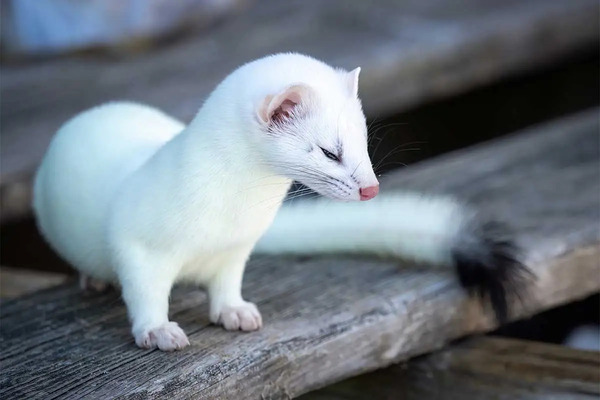
Handling your ermine requires patience and care. Here are some tips for safe interactions:
Gentle Approach: Always approach your ermine calmly and gently. Avoid sudden movements that might startle them.
Regular Handling: Spend time handling your ermine daily to build trust and familiarity. Start with short sessions and gradually increase the duration as they become more comfortable.
Supervision: Always supervise interactions with children and other pets to prevent any accidental injuries.
Ermines, also known as stoats or short-tailed weasels, are small mammals belonging to the weasel family. While they are often admired for their cute appearance and agile nature, questions arise about their potential danger to humans and other animals. Here’s a comprehensive look at the dangers associated with ermines.
Ermines are known for their playful and curious nature. In the wild, they are predators, often hunting small rodents and birds. While they are not typically aggressive towards humans, they can exhibit defensive behavior if threatened. If cornered or handled, an ermine might bite to defend itself. This bite can be painful, though they are not known to be aggressive in normal circumstances.
Bite Strength: Ermines have sharp teeth and a strong bite relative to their size. A bite can cause puncture wounds that may become infected if not properly treated.
Potential for Disease: Like many wild animals, ermines can carry diseases such as rabies, though this is rare. A bite from an infected animal could pose health risks, which is why it is essential to handle them carefully.
In their natural habitat, ermines play a role as predators. However, their predatory nature can pose a threat to small wildlife populations, especially in areas where they are not native. In regions where ermines are introduced, they can disrupt local ecosystems and contribute to the decline of native species.
While some people may consider keeping ermines as pets, this practice can be problematic:
Not Domesticated: Ermines are wild animals and do not possess the same temperaments as domesticated pets. They may be difficult to train and can exhibit unpredictable behaviors.
Care Requirements: They require a specialized diet and environment, which can be challenging for an average pet owner to provide. Inappropriate care can lead to health issues for the animal and possible danger for humans
Overall, while ermines are not inherently dangerous to humans, they can bite if threatened and may pose risks if kept as pets due to their wild nature. They can also impact local wildlife populations when introduced to non-native environments. It’s important to respect these creatures and their natural behaviors, appreciating them in the wild rather than attempting to domesticate them. If you encounter an ermine, it’s best to observe from a distance and avoid any actions that may startle or threaten them.
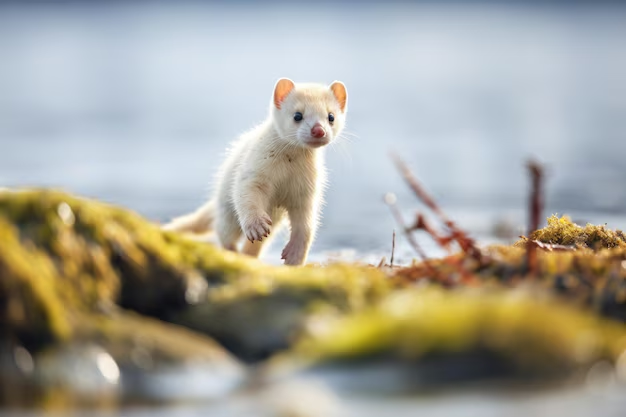
Interacting with your ermine is an important part of their care, helping to build trust and a bond between you and your pet. Here are some tips on how to effectively interact with and handle your ermine:
Safe Space: Ensure that your ermine's habitat is secure and free from potential hazards. A calm and safe environment will make them more comfortable during interactions.
Quiet Time: Choose a quiet time for interaction when there are minimal distractions. Avoid loud noises or sudden movements that might startle your ermine.
Approach Slowly: When you want to pick up your ermine, approach them slowly and calmly. Sudden movements can scare them.
Support Their Body: When lifting your ermine, use both hands to support their body. Cradle them gently, ensuring they feel secure.
Respect Their Space: If your ermine shows signs of stress (like hissing or trying to escape), give them space. It's important to respect their comfort level.
Engage in Play: Ermines are playful and curious creatures. Use toys such as small balls, tunnels, or feather wands to encourage active play.
Obstacle Courses: Create a safe obstacle course for your ermine to navigate. Use household items like cardboard boxes or tunnels to stimulate their natural instincts to explore and climb.
Basic Training: You can train your ermine to respond to simple commands or to come when called. Use positive reinforcement, such as treats, to reward good behavior.
Mental Stimulation: Provide puzzles or toys that require problem-solving. This keeps their minds engaged and reduces boredom.
Gentle Petting: Many ermines enjoy being petted. Use gentle strokes along their back and sides, always petting in the direction of their fur growth.
Massage: Some ermines may enjoy a light massage, especially around their neck and shoulders. Observe their reaction to see if they enjoy this.
Bathing: If your ermine enjoys water, you can introduce them to a shallow warm bath. This can be a fun bonding activity and helps with hygiene.
Supervision: Always supervise bath time to ensure your ermine is safe and comfortable.
Consistent Interaction: Spend time with your ermine daily to help them become accustomed to your presence and voice. This builds trust and comfort over time.
Family Interaction: Allow other family members to interact with the ermine, ensuring they handle the pet gently and respectfully.
Routine Handling: Use interaction time to check your ermine for any signs of health issues, such as unusual lumps or changes in behavior. Regular handling helps familiarize them with human touch and reduces stress during veterinary visits.
Interacting with your ermine can be a rewarding experience for both you and your pet. By creating a comfortable environment, engaging in play, and providing gentle handling, you can build a strong bond with your ermine. Remember to always be patient and attentive to their needs, allowing them to set the pace for interactions. With time and care, your ermine can become a beloved companion.
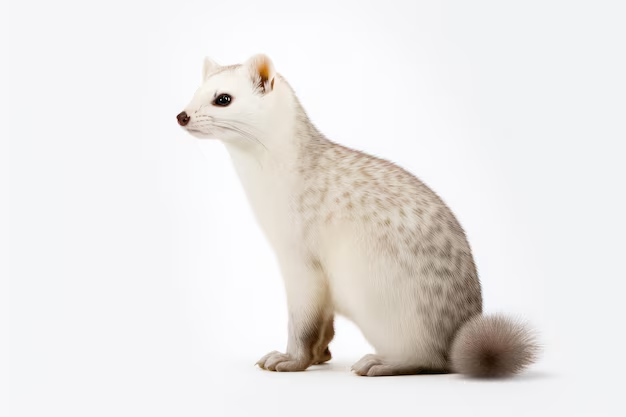
Before bringing an ermine into your home, be aware of the legalities involved. In some areas, it may be illegal to own an ermine as a pet, or specific permits may be required. Check local laws and regulations to ensure compliance.
Ermines, also known as stoats or short-tailed weasels, are unique and fascinating animals. However, in some regions, keeping them as pets is illegal or highly regulated. Understanding these restrictions is essential for potential pet owners. Here’s a detailed look at various locations where owning an ermine as a pet may be prohibited.
In the United States, laws regarding the ownership of ermines vary by state:
California: The California Code of Regulations classifies ermines as restricted species. Possession requires a special permit, which is difficult to obtain for private individuals.
New York: Similar to California, New York prohibits the ownership of ermines as pets without a special license.
Florida: Florida has stringent regulations on exotic pets, and ermines fall under these regulations. Owners must apply for a permit and meet specific requirements.
It is essential to check the regulations in your specific state and municipality, as local laws may impose additional restrictions.
In Canada, wildlife laws differ by province. Generally, keeping ermines as pets is not allowed:
British Columbia: The Wildlife Act prohibits the ownership of ermines and other wild species without a special license, which is typically reserved for zoos or research institutions.
Ontario: The Fish and Wildlife Conservation Act restricts the possession of ermines as pets, categorizing them as wildlife.
As with the U.S., it is crucial to check local regulations, as municipalities may have their own laws regarding exotic pet ownership.
Within the European Union, the regulations surrounding exotic pets, including ermines, can vary significantly by country:
Germany: In Germany, keeping ermines as pets is generally prohibited unless one has a special permit. The country has strict animal welfare laws that prioritize the well-being of wildlife.
Netherlands: Similar to Germany, the Netherlands has regulations against keeping ermines as pets. They are classified as wild animals and require a license for ownership.
United Kingdom: Although regulations may vary, owning an ermine without a special license can be illegal. The Animal Welfare Act mandates that any pet owner must provide proper care, which can be challenging for wild species.
In Australia, strict biosecurity laws govern the ownership of non-native species:
All states and territories: Ermines are considered invasive species due to their potential impact on local wildlife. Therefore, keeping them as pets is generally prohibited across the country.
Before considering an ermine as a pet, it’s crucial to research the laws in your area. In many places, owning an ermine is illegal or heavily regulated, often requiring special permits that are not easy to obtain. Always prioritize the welfare of the animal and adhere to local wildlife protection laws. If you're interested in having a pet, consider looking into legal options that can provide a similar playful and engaging experience without the complications of exotic pet ownership.
Royals wear ermine primarily for its historical significance and symbolism of power and prestige. Here are some key reasons:
Symbol of Royalty: Ermine fur, especially in its winter white form, has been associated with royalty for centuries. It represents purity, elegance, and high status, making it a favored choice for royal robes and ceremonial attire.
Historical Significance: The use of ermine can be traced back to the Middle Ages in Europe, where it was often worn by kings and queens. It was considered a luxury item, available only to the wealthy and powerful.
Visual Distinction: The striking appearance of ermine, with its white fur and distinctive black-tipped tails, creates a visually dramatic effect. This makes it an excellent choice for formal occasions and ceremonial garments, helping royals stand out.
Cultural Traditions: In many cultures, specific garments signify authority and leadership. Wearing ermine is part of a broader tradition of using luxurious materials to convey the importance of royal figures.
Ceremonial Use: Ermine is often used in ceremonial robes, such as those worn during coronations or state functions, reinforcing the importance of the occasion and the status of the wearer.
Overall, the choice to wear ermine is deeply rooted in historical, cultural, and symbolic factors, making it a lasting emblem of royal status.
Ermines can be delightful and engaging pets for the right owners. Their playful nature and striking appearance make them a unique addition to any household. However, they require specific care, attention, and commitment. If you’re ready to take on the responsibility, an ermine can become a cherished member of your family. Always do thorough research and consult with professionals to ensure you’re providing the best care possible for your new furry friend!
animal tags: Ermines
We created this article in conjunction with AI technology, then made sure it was fact-checked and edited by a Animals Top editor.